Da Nang is the largest city in Central Vietnam, but even with a population of about a million people, it’s managed to retain a small-town feel. It’s a progressive city that is clean, modern, and growing.
The Han River flows right through the middle of the city. To the west, you’ll find the cosmopolitan city center. Along the river, the streets are full of trendy bistros, restaurants, and bars, and farther west toward the mountains there are thriving commercial areas, quiet tree-lined neighborhoods, and innumerable little mom-and-pop shops and cafés. The east side of the river feels more like a beach town than a city. The long, uncrowded beaches and warm waters of the South China Sea are always close by.
Parks and promenades line both banks of the river and provide perfect respite from the city streets. They fill up every evening as locals socialize or take strolls along the statue gardens and topiary, watching the stream of small boats making their way up and down the river from the South China Sea.
Several architecturally stunning bridges cross the Han River. Animated rainbows of colored lights dance across their spans every night. During the day, you can see the full length of the yellow-gold Dragon Bridge, which is designed to look like its namesake. It starts on the west side of the river and ends clear on the other side. The bridge draws crowds every Friday and Saturday night when the dragon’s head spouts fire and steam from its huge mouth.
Da Nang has the distinction of being one of the cleanest cities in Vietnam. There is very little litter anywhere in the city and anti-littering laws are enforced. It also has an active recycling program. People love the 18-mile long beach with its pretty promenade and numerous parks, and they appreciate Da Nang’s lack of corruption and business-friendly attitude. In fact, Da Nang is the best place in Vietnam to do business, according to the recent report by the Vietnam Provincial Competitiveness Index. A strong sense of civic pride and capable leadership have ensured that growth does not come at the cost of quality of life.
For years, Da Nang went relatively unnoticed, overshadowed by the neighboring town of Hoi An, a historical gem located just a 30-minute drive south. People would fly into Da Nang’s international airport or arrive at the train station, then immediately take a taxi to Hoi An, never giving Da Nang a second thought. In recent years, though, Da Nang has become a destination in its own right. This dynamic city has so much to offer, with beaches to the east, mountains to the west, two world-class golf courses, and unfailingly friendly residents, it’s no surprise that Da Nang is considered to be the most livable city in Vietnam.
Retire in Da Nang
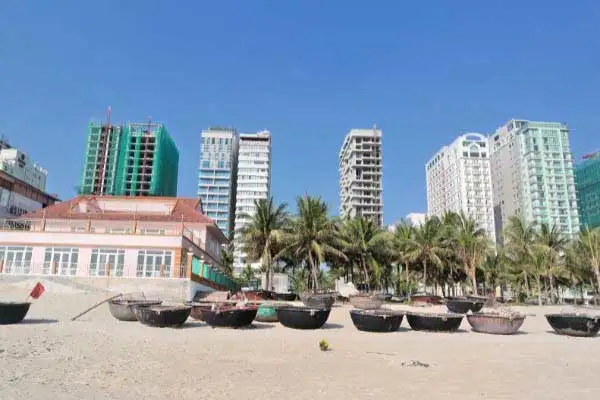
Even though it’s a city of one million and offers all the shopping and conveniences that you would expect for a town of this size, Da Nang has a pleasant, small-town ambiance.
Da Nang’s locals are friendly and helpful; if you spend a few months here, you’ll likely have a mix of Vietnamese and foreign friends. They take pride in ensuring that foreigners have a positive opinion of their city. Many speak excellent English, too, and they love to improve their skills by interacting with native English speakers. They also enjoy helping foreigners develop their Vietnamese language skills, and take great delight when an effort is made to speak, even if it’s done poorly. It’s fun for everyone involved, and it’s an excellent way to make friends in the community.
Da Nang has a tropical monsoon climate, with hot summers, mild winters, and a rainy season that runs from late August through October. Year-round high temperatures average less than 79 F. The temperature rarely drops below 63 F, even on the coldest nights. During the summer months, expect to see high temperatures in the 90s F, and an occasional day when it might exceed 100 F. Tropical storms, heavy rains, and occasional typhoons occur annually between late August and early November. Winters tend to be fairly wet and humid, although late in the season, the precipitation drops markedly. By March and April, rain occurs an average of just three days per month. Da Nang’s air quality is usually excellent.
Several international hospitals provide quality medical care. Both Vinmec International Hospital and Hoan My Danang Hospital provide a full range of services, with 24-hour emergency care, inpatient care, and a staff of English-speaking specialists. Translators are available to assist the foreign community, as well. Da Nang has several dental clinics that provide international-quality care: East Meets West Dental Center and Serenity International Dental are two of the best ones in the city. Prices for both medical and dental care are a fraction of what you would pay in the States.
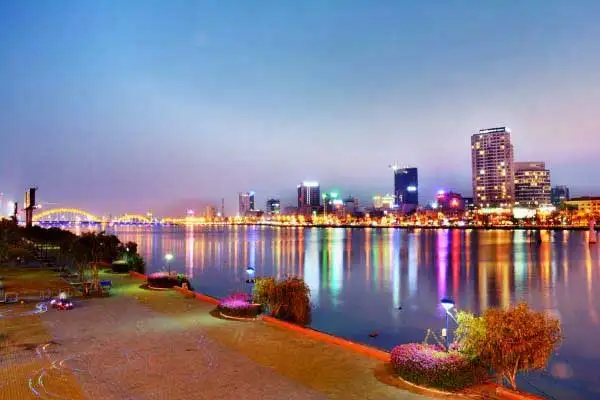
Da Nang has a limited and inefficient bus system, so most foreigners own or rent small motorbikes to get around. Da Nang drivers tend to be courteous and follow the traffic laws more than you may experience in many Vietnamese cities. Streets are generally in good repair, too.
If you can’t picture yourself driving a motorbike, you can get around easily by foot or bicycle, and use taxis for longer distances. Ride-hailing companies like Grab Bike and Grab Taxi have affordable, fixed-rate fares; they tend to charge less than standard metered taxis.
Finding a place to live is easy. There is a wide variety of month-to-month serviced apartments near the coast. Many landlords will post “for rent” signs outside their buildings. If you’re looking for something longer term, property management companies like Central Vietnam Realty always have listings—they’ll even take you around to view them. Expect to spend around $350 per month for a serviced studio or one-bedroom apartment near the beach. Da Nang also has an assortment of condominiums for sale. Prices start at less than $100,000.
Many expats choose to live in one of two areas in Da Nang—either in the central city or by the beach. The oceanside neighborhood of An Thuong is the hub of the expat community, with dozens of restaurants serving Vietnamese and international cuisine, minimarkets, and other businesses that cater to a mostly foreign clientele. It borders on Da Nang’s best beach, too.
Lifestyle in Da Nang
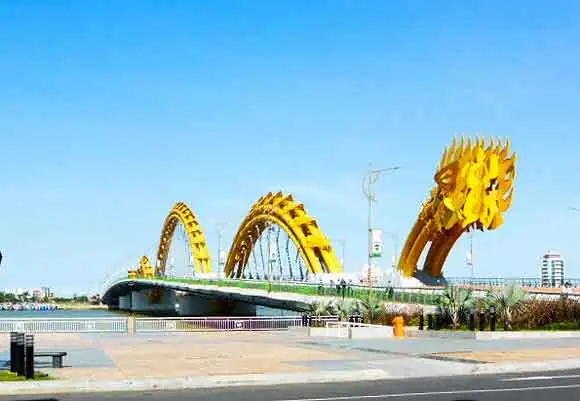
Although Da Nang’s picture-perfect beach is one of its main attractions, it isn’t a typical beach town. Even on the nicest days, the palm-lined beach is surprisingly uncrowded. In the winter, the waves are occasionally large enough for surfing, and in the summer, the soft, powdery sand is just right for sun bathing. The water in this part of the South China Sea is warm and inviting.
There are many seafood restaurants that stretch along the beach and there has been a lot of beachside resort development south of town. Practically the entire beach in the city of Da Nang is open to the public.
Heading south toward Hoi An, there are two world-class golf clubs located almost across the street from each other—Montgomerie Links and Danang Golf Resort.
Da Nang offers enough diversions to fill your days even if you’re not a beach person. The riverfront promenade extends along the Han for the entire length of the city center. Whether you’re in the mood for fine dining or simple fare, you’ll find plenty of good food along this stretch. Da Nang has a wide selection of restaurants, offering delicious and distinctive Central Coast-style Vietnamese cuisine, as well as American, Italian, Japanese, Mexican, and European fare.
Shopping is also a popular pastime. The new Vincom Mall on the east side of the river has a movie theater and ice skating rink in addition to four floors of shops. There are several large supermarkets and department stores, as well as several busy traditional markets. The markets are the place to go to stock up on fresh and inexpensive local fruits and vegetables.
Considering that a 12-ounce glass of local draft beer costs less than $0.50, it’s not surprising that socializing over a few glasses is a popular pastime. You’ll see popular bia hoi’s—open-air restaurants and beer gardens that sell keg beer and good Vietnamese food—throughout the city. These places tend to be easy on the budget, and they are lively places to not only eat and drink, but to get into the local scene, too.
Cost of Living in Da Nang
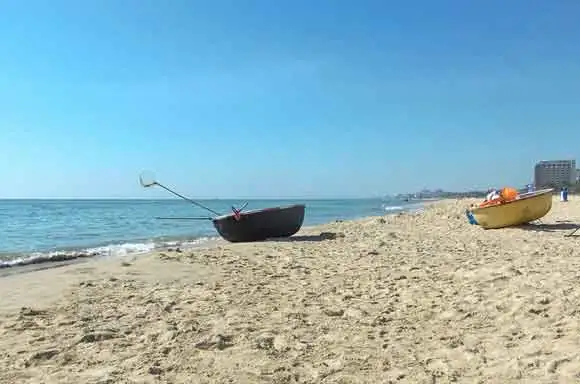
Living in this city does not come with a big price tag. Da Nang offers residents a high standard of living for a fraction of the price that you would find in almost any other country. A head of lettuce costs about $0.30, and locally grown potatoes and vine-ripe tomatoes cost less than $0.40 a pound.
Furnished apartments or houses in attractive neighborhoods within walking distance of the riverfront or beach start at less than $400 per month. High-speed internet costs less than $10 per month, and housekeepers are happy to earn just $2 or $3 per hour.
Eating out can often cost less than cooking at home. Just a dollar or two will buy a hearty bowl of mì quảng, the popular turmeric-infused noodle dish, or a bánh mì ốp la, a Vietnamese omelet sandwich on a French baguette. On the high end, there are several seafood buffets that cost around $20 per person, and a top-end meal of imported steak or seafood, with drinks, won’t cost more than $50 for a couple.
Two people could live comfortably in Da Nang on a budget of around $1,000 per month, including rent, utilities, food, frequent meals out, and all incidentals.
12 Best Things to Do in Da Nang, Vietnam
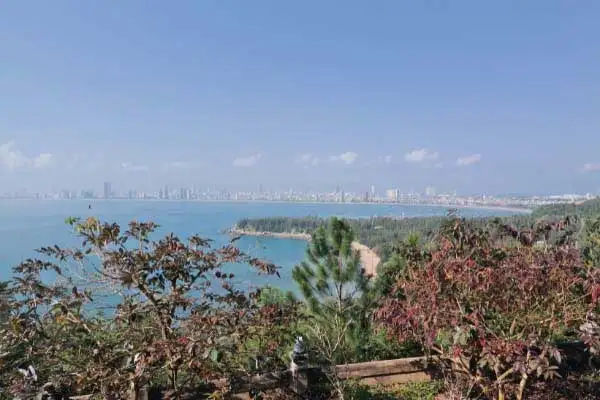
Da Nang is so modern and progressive that it’s been dubbed “the Singapore of Vietnam.” It’s a prosperous city full of swanky resorts, great restaurants, miles of beautiful beach, and frequent festivals. Stay for a few days, and you’ll discover hidden markets, deserted beaches, and perfect places to stroll, exercise, or just relax. Maybe you’ll happen upon the best cup of artisanal coffee you’ve ever tasted, or be treated to live music and craft beer.
Here are a few of my favorite things to do in Da Nang:
1. Watch the Fire Breathing Dragon Bridge Show

It might sound strange, but Da Nang’s bridges are so impressive, they’ve become one of its most popular attractions. Of these, the highlight is the amazing Dragon Bridge, which crosses the Han River right in the city center. Head to the park on the east side of the river by the dragon’s head and join the fun when the dragon’s mouth spouts jets of fire and steam every Saturday and Sunday night at 9 p.m. For a special evening, take a boat cruise or stop at one of the trendy restaurants you’ll find lining both banks of the river. They offer views of the four best bridges while providing refuge from the busy riverfront streets.
2. Soak Up Sand and Sun at One of Vietnam’s Best Beaches
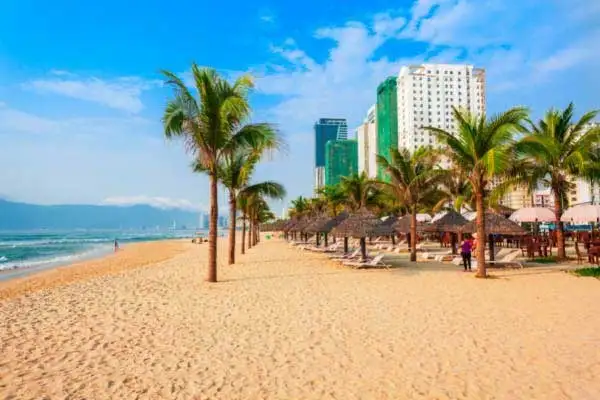
My Khe Beach, which extends along the Son Tra Peninsula for several miles, is the most popular stretch of sand in Da Nang. It’s often deserted during the day, though it fills up shortly before the sun sets. The best part of the beach starts across the street from the Holiday Beach Danang Hotel and continues south to the Pullman Danang Beach Resort. Beaches by other names continue unbroken for miles in either direction. All of Da Nang’s beaches are open to the public, though you may need to walk through a resort to access them in some places.
3. Sample Da Nang’s Most Famous Noodle Dish
Mì quảng is Da Nang’s signature dish. It’s an enormously popular meal consisting of a bowl of hearty, hand-cut noodles with chicken, shrimp, fish, or pork in a bit of turmeric-infused broth, served with a hard-boiled egg, peanuts, fresh greens, and herbs. One of the best places to eat chicken mì quảng is the sidewalk café at 58 Quang Trung in the city center, though any place packed with hungry Vietnamese diners will do.
4. Take an Evening Stroll Along the Riverfront
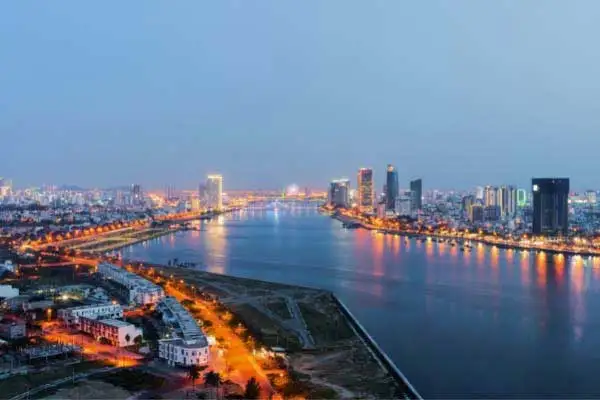
Parks and promenades on both banks of the Han River provide perfect respite from the city streets, and fill up every evening as locals socialize or stroll along the statue gardens and topiary, watching the small boats make their way up and down the river from the South China Sea. The promenades stretch for miles through the town, with plenty of restaurants, bars, bistros, coffee shops, and ice cream parlors to stop at along the way.
5. Replenish Your Spirit
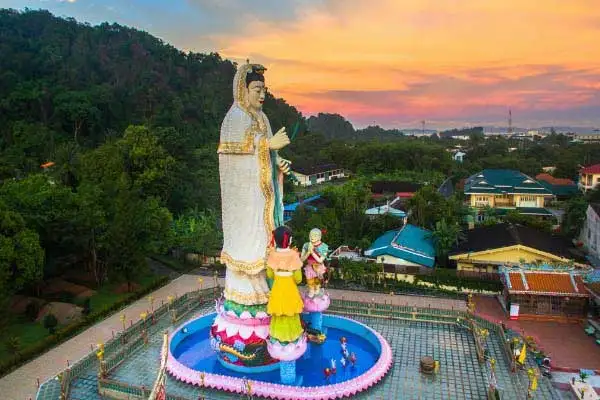
If you’re anywhere near the ocean in Da Nang, you’ll be able to see the statue of Quan Am, Goddess of Mercy and Compassion, that overlooks the city and sea from a hill to the north. The 220-foot-high statue—one of the tallest in Vietnam—is the main attraction at the Linh Ung Pagoda Complex, though there are also expansive views of the city and some interesting life-size statues of Buddhist saints to contemplate. This pagoda complex is the largest one in Da Nang and one of the most beautiful in Vietnam.
6. Savor the Flavors of Artisanal Coffee
Da Nang has some wonderful coffee shops, where fine coffee drinks are concocted with laboratory precision. Gold Star Coffee brews some of the best coffee that I’ve had the pleasure of consuming anywhere in Vietnam; the skilled owner, who studied the art of coffee making overseas, creates a delectable brew.
7. Browse the Wares at a Traditional Market
Da Nang’s two largest markets, Cho Han and Cho Con, are always full of locals buying their daily food, though you can also find assortments of souvenirs, clothing, and odd items that you never realized existed. They are also good places to sample favorite local foods at low, Da Nang prices.
8. Explore Da Nang’s Protected Natural Reserve
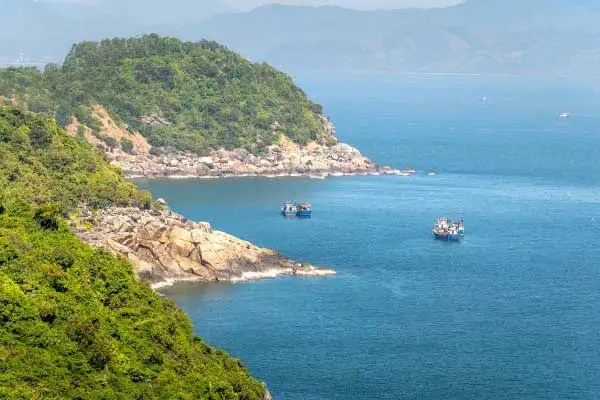
The dense forests of Son Tra Nature Reserve are home to more than 100 animal species, including the red-shanked duoc langur, one of the world’s rarest and most colorful monkeys. If you come in the morning and stay very quiet, you might get lucky and spot some.
As you wind your way up to the 2,789-foot summit of Son Tra Mountain following the empty small lanes around the peninsula, you’ll discover an 800-year-old banyan tree, an old lighthouse, a statue of Confucius playing chess, and serene hidden beaches. The views are stunning; uninhabited hills descend to the coastline and misty islands shimmer in the distance.
9. Explore the Cave Temples at Marble Mountain
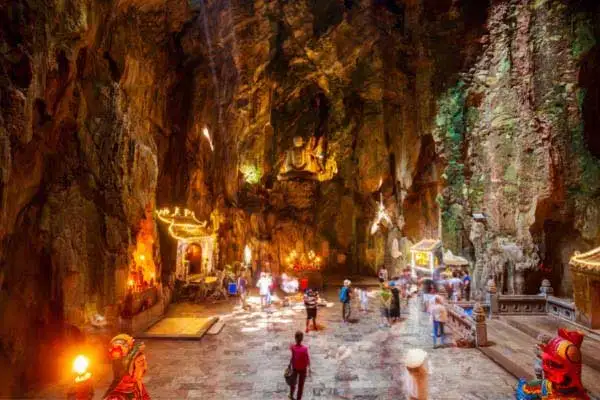
This small cluster of limestone mountains, which rise abruptly from the coastal plain just south of Da Nang, are home to a collection of pagodas and temples, some of them more than 400 years old. An elevator takes you up to a good spot to begin your exploration, though you could also climb the uneven stone steps to the temple complex. At the top, it seems as if there’s a new temple or pagoda every few yards. Some of them are located within caves; it’s amazing to discover the life-size Bodhisattva in Quan Am Cave and the strange, hidden creatures representing Hell in Huyen Khong Cave.
10. Festivals and Fun
There’s always something happening in Da Nang. One of the best ways to see what’s planned is to download the Danang FantastiCity app on your phone. Beach festivals and the internationally acclaimed Firework Festival take place every summer. Marathons, art exhibits, and concerts are held regularly throughout the year.
11. Take a Motorbike to the Summit of Hai Van Pass
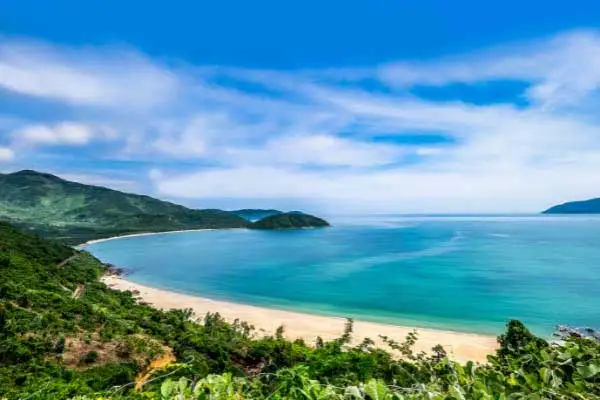
This short road trip takes you away from the city and into a misty wonderland with stunning ocean views and abundant nature. The old highway is one of the best motorbike roads in Vietnam, but it’s worth seeing in a car, too. From the old French fortifications at the summit, you’ll be treated to spectacular views of the fishing village of Lang Co to the north, Da Nang to the south, endless mountains, and the rugged coastline of the South China Sea far below.
12. Enjoy Outstanding Traditional Da Nang Cuisine
Bếp Hên is a little restaurant near the Dragon Bridge that serves up delicious, traditional food in a comfortable, home-like setting. You’ll feel as if you’re eating at your Vietnamese grandmother’s house.









